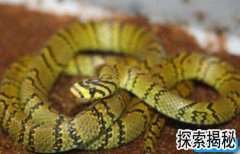highlander是什么意思
一、highlander的意思1、高原地区的人。2、山地人。3、苏格兰高地人。4、汉兰达汽车。二、highlander的读音英 [ˈhaɪləndə(r)],美 [ˈhaɪləndər]。三、highlander示例1、Highlander construction ltd, the main contractor of a housing development project, employed five. 高原建筑工程有限公司为一项房屋发展计划的总承建商,并雇佣了五名天秤。2、The retrofitted Highlander I drove can travel 300 miles on a tank of hydrogen. 我试驾的这辆改装汉兰达加一缸氢能开300英里。扩展资料高原地区的人的另一个英文说法—People in the Highlands:一、读音[ˈpiːpl ɪn ðə ˈhaɪləndz]二、Highlands释义高原地区,山岳地带。三、示例Over half of the people live in the central highlands and40% live in the southern plainsbordering India. 该国超过一半的人口住在中央高地,40%的人口住在与印度交界的南方山区。
找苏格兰跟英格兰的简介,(历史,政治风土人情要英文版的)
苏格兰历史History The founders of Scotland of late medieval legend, Scota with Goídel Glas, voyaging from Egypt, as depicted in a 15th century manuscript of the Scotichronicon of Walter Bower. Main article: History of Scotland Early history Main article: Prehistoric Scotland Repeated glaciations, which covered the entire land-mass of modern Scotland, destroyed any traces of human habitation that may have existed before the Mesolithic period. It is believed that the first post-glacial groups of hunter-gatherers arrived in Scotland around 12,800 years ago, as the ice sheet retreated after the last glaciation.[21][22] Groups of settlers began building the first known permanent houses on Scottish soil around 9,500 years ago, and the first villages around 6,000 years ago. The well-preserved village of Skara Brae on the Mainland of Orkney dates from this period. Neolithic habitation, burial and ritual sites are particularly common and well-preserved in the Northern Isles and Western Isles, where a lack of trees led to most structures being built of local stone.[23] A four thousand year old tomb with burial treasures was discovered at Forteviot, near Perth, the capital of a Pictish Kingdom in the eighth/ninth century AD. Unrivalled anywhere in Britain, it contains the remains of an early Bronze Age ruler laid out on white quartz pebbles and birch bark, with possessions including a bronze and gold dagger, a wooden bowl and a leather bag.[24]Roman influence Main article: Scotland during the Roman Empire Skara Brae, a neolithic settlement, located in the Bay of Skaill, Orkney. The written protohistory of Scotland began with the arrival of the Roman Empire in southern and central Great Britain, when the Romans occupied what is now England and Wales, administering it as a province called Britannia. Roman invasions and occupations of southern Scotland were a series of brief interludes.In AD 83–84 the general Gnaeus Julius Agricola defeated the Caledonians at the Battle of Mons Graupius, and Roman forts were briefly set along the Gask Ridge close to the Highland line (only Cawdor near Inverness is known to have been constructed beyond that line). Three years after the battle the Roman armies had withdrawn to the Southern Uplands.[25]The Romans erected Hadrian's Wall to control tribes on both sides of the wall,[26] and the Limes Britannicus became the northern border of the empire, although the army held the Antonine Wall in the Central Lowlands for two short periods—the last of these during the time of Emperor Septimius Severus from 208 until 210.[27]The extent of Roman military occupation of any significant part of northern Scotland was limited to a total of about 40 years, although their influence on the southern section of the country occupied by Brythonic tribes such as the Votadini and Damnonii would still have been considerable between the first and the fifth century.[26]A replica of the Pictish Hilton of Cadboll Stone. Medieval period Main articles: Picts, Scotland in the High Middle Ages, Scotland in the Late Middle Ages, and Scottish clan The Kingdom of the Picts (based in Fortriu by the 6th century) was the state which eventually became known as "Alba" or "Scotland". The development of "Pictland", according to the historical model developed by Peter Heather, was a natural response to Roman imperialism.[28] Another view places emphasis on the Battle of Dunnichen, and the reign of Bridei m. Beli (671–693), with another period of consolidation in the reign of �0�7engus mac Fergusa (732–761).[29] The Kingdom of the Picts as it was in the early 8th century, when Bede was writing, was largely the same as the kingdom of the Scots in the reign of Alexander (1107–1124). However, by the tenth century, the Pictish kingdom was dominated by what we can recognise as Gaelic culture, and had developed an Irish conquest myth around the ancestor of the contemporary royal dynasty, Cináed mac Ailpín (Kenneth MacAlpin).[2][30][31]From a base of territory in eastern Scotland north of the River Forth and south of the River Oykel, the kingdom acquired control of the lands lying to the north and south. By the 12th century, the kings of Alba had added to their territories the English-speaking land in the south-east and attained overlordship of Gaelic-speaking Galloway and Norse-speaking Caithness; by the end of the 13th century, the kingdom had assumed approximately its modern borders. However, processes of cultural and economic change beginning in the 12th century ensured Scotland looked very different in the later Middle Ages. The stimulus for this was the reign of King David I and the Davidian Revolution. Feudalism, government reorganisation and the first legally defined towns (called burghs) began in this period. These institutions and the immigration of French and Anglo-French knights and churchmen facilitated a process of cultural osmosis, whereby the culture and language of the low-lying and coastal parts of the kingdom's original territory in the east became, like the newly acquired south-east, English-speaking, while the rest of the country retained the Gaelic language, apart from the Northern Isles of Orkney and Shetland, which remained under Norse rule until 1468.[32][33][34]The Wallace Monument commemorates William Wallace, the 13th-century Scottish hero. The death of Alexander III in March 1286, followed by the death of his granddaughter Margaret, Maid of Norway, broke the succession line of Scotland's kings. This led to the intervention of Edward I of England, who manipulated this period of confusion to have himself recognised as feudal overlord of Scotland. Edward organised a process to identify the person with the best claim to the vacant crown, which became known as the Great Cause, and this resulted in the enthronement of John Balliol as king. The Scots were resentful of Edward's meddling in their affairs and this relationship quickly broke down. War ensued and King John was deposed by his overlord, who took personal control of Scotland. Andrew Moray and William Wallace initially emerged as the principal leaders of the resistance to English rule in what became known as the Wars of Scottish Independence.The nature of the struggle changed dramatically when Robert de Brus, Earl of Carrick, killed rival John Comyn on 10th February 1306 at Greyfriars Kirk in Dumfries.[35] He was crowned king (as Robert I) less than seven weeks after the killing. Robert I battled to win Scottish Independence as King for over 20 years, beginning by winning Scotland back from the English invaders piece by piece. Victory at The Battle of Bannockburn in 1314 proved that the Scots had won their kingdom, but it took 14 more years and the production of the world's first documented declaration of independence the Declaration of Arbroath in 1320 to finally win legal recognition by the English.However war with England was to continue for several decades after the death of Bruce, and a civil war between the Bruce dynasty and their long-term Comyn-Balliol rivals lasted until the middle of the 14th century. Although the Bruce dynasty was successful, David II's lack of an heir allowed his nephew Robert II to come to the throne and establish the Stewart Dynasty.[33][36] The Stewarts ruled Scotland for the remainder of the Middle Ages. The country they ruled experienced greater prosperity from the end of the 14th century through the Scottish Renaissance to the Reformation. This was despite continual warfare with England, the increasing division between Highlands and Lowlands, and a large number of royal minorities.[36][37]Modern history David Morier's depiction of the Battle of Culloden. In 1603, James VI King of Scots inherited the throne of the Kingdom of England, and became King James I of England, and left Edinburgh for London.[38] With the exception of a short period under the Protectorate, Scotland remained a separate state, but there was considerable conflict between the crown and the Covenanters over the form of church government. After the Glorious Revolution, the abolition of episcopacy and the overthrow of the Roman Catholic James VII by William and Mary, Scotland briefly threatened to select a different Protestant monarch from England.[39] On 22 July 1706 the Treaty of Union was agreed between representatives of the Scots Parliament and the Parliament of England and the following year twin Acts of Union were passed by both parliaments to create the united Kingdom of Great Britain with effect from 1 May 1707.[14]The deposed Jacobite Stuart claimants had remained popular in the Highlands and north-east, particularly amongst non-Presbyterians. However, two major Jacobite risings launched in 1715 and 1745 failed to remove the House of Hanover from the British throne. The threat of the Jacobite movement to the United Kingdom and its monarchs effectively ended at the Battle of Culloden, Great Britain's last pitched battle. This defeat paved the way for large-scale removals of the indigenous populations of the Highlands and Islands, known as the Highland Clearances.[14]The Scottish Enlightenment and the Industrial Revolution made Scotland into an intellectual, commercial and industrial powerhouse.[citation needed] After World War II, Scotland experienced an industrial decline which was particularly severe.[40] Only in recent decades has the country enjoyed something of a cultural and economic renaissance. Economic factors which have contributed to this recovery include a resurgent financial services industry, electronics manufacturing, (see Silicon Glen),[41] and the North Sea oil and gas industry.[42]Following a referendum on devolution proposals in 1997, the Scotland Act 1998[43] was passed by the United Kingdom Parliament to establish a devolved Scottish Parliament.
highland是什么意思
highland作形容词意为:高地的,高原的;苏格兰高地的,苏格兰高地人的作名词意为:高地,高原;苏格兰高地(the Highlands);海兰(苏格兰北部行政区)(Highland)英文例句:The highland chieftain has two daughters.高地酋长有两个女儿。He was born in the Highland.他出生于苏格兰高地。highland在英国一般指的是苏格兰高地,英国地势地图





